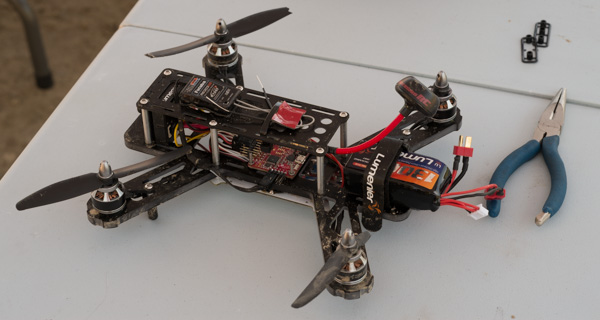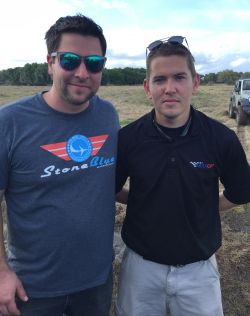Podcast: Play in new window | Download (Duration: 31:14 — 21.5MB)
Airbus funds new UAV battery technology and flys a rotary-wing UAV, an upcoming UAS Traffic Management workshop, a hydrogen-powered UAV for the Navy, a heavy-payload long-range drone, drones for all budgets, drone racing at Daytona, and how mosquitoes might help drones make less noise.
UAV News
Airbus’s VSR700 Rotary-wing UAV Takes Flight
Airbus Helicopters has flown their VSR700 prototype at a drone test center in France. It’s a rotary-wing, multi-mission Naval UAS (RWUAS) that was tethered on 30-meter cables and fitted with stabilizing outriggers. A year ago, Airbus flew an optionally piloted demonstrator for the VSR700 that was based on an existing light helicopter. This new prototype is redesigned with a payload bay replacing the flight deck.
Airbus Funds Next-Gen UAV Battery Technology
Airbus Defence and Space is providing financing to battery technology company Amprius. That company manufactures high energy density lithium-ion batteries based on silicon nanowire anode technology. Amprius says their batteries provide up to 50% more power than standard lithium-ion batteries. The Airbus funding is expected to help Amprius develop a higher volume production capacity as well as even higher energy density cells.
FAA and NASA Drone Industry Workshop
The FAA and NASA will jointly host an Unmanned Aircraft Systems (UAS) Traffic Management (UTM) Pilot Program (UPP) Phase 2 Industry Workshop. The half-day workshop is scheduled for December 9, 2019, at NASA’s Ames Conference Center in Mountain View, California. Registration is free but attendance will be limited to the first 150 to register, with a limit of two attendees per organization. For additional background, see: FAA/NASA UAS Traffic Management Pilot Program (UPP) [PDF]
Navy Accepts First-of-its-kind HYCOPTER Hydrogen Powered UAS
The six-rotor HYCOPTER from H3 Dynamics is the first hydrogen fuel cell-powered rotary-wing UAS for the US Navy. The Naval Postgraduate School in Monterey, California took delivery of their HYCOPTER on October 25, 2019. With a takeoff weight of about 35 pounds and a blade tip-to-blade tip diameter of 7 feet, the UAS can carry a five-pound payload in an open bay for about 2 ½ hours. The HYCOPTER uses an ultralight PEM fuel cell and compressed hydrogen gas. Austin, Texas-based HES Energy Systems is a subsidiary of H3 Dynamics and describes the HYCOPTER on its website as “Designed and manufactured in the USA.”
UAVita Showcases a Heavy-Payload, Long-Range UAV Drone
The UAVita Discovery is a medium-sized, fixed-wing UAV that can carry heavy payloads over a long range. Originally used for crop dusting and precision ag, it’s now being used for other long-range missions such as search and rescue, highway monitoring, and powerline inspections.
Video: UAvita Systems Showcases Their Heavy-payload Drone at Commercial UAV Expo 2019
Seasoned Pilot or Aviation Amateur, Here Are 5 Drones for All Budgets
Consider the DROCON Bugs 3, Syma X5C, Parrot Mambo Drone FPV Kit, DJI Spark, or even the DJI Inspire 2.
Drone racing takes a whirl in Daytona Stadium
Over 1,000 drone racers tried to qualify for the 5th annual RaceDayQuads 2019 MultiGP Drone Racing Championship in Daytona Stadium. The sports class saw 125 racers qualify, while 85 qualified for the pro-competition. MultiGP is a global, professional, drone racing league with hundreds of international chapters and over 27,000 registered drone racers.
Sounds of mosquito mating rituals could lead to quieter drones
Researchers at Johns Hopkins University discovered that mosquitoes can focus the buzz they make in the direction of potential mates. A paper published in Bioinspiration and Biomimetics says, “…understanding the strategies and adaptations employed by insects such as mosquitoes to control their aeroacoustic noise could eventually provide insights into the development of quiet drones and other bioinspired micro-aerial vehicles.”

 Guest Chris Thomas from
Guest Chris Thomas from 